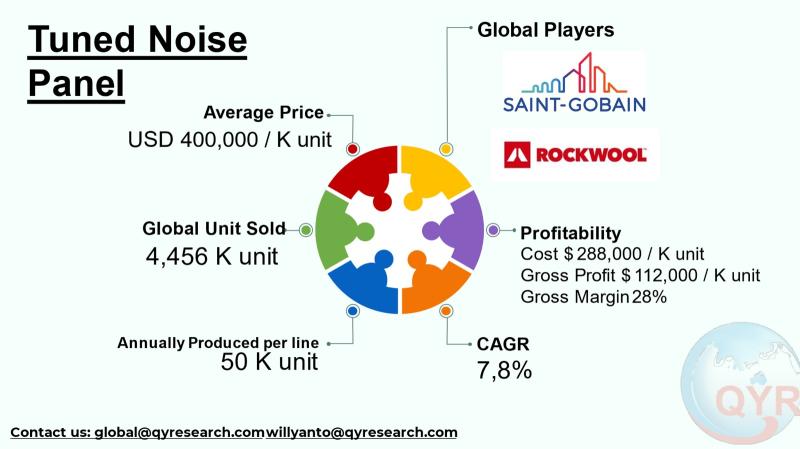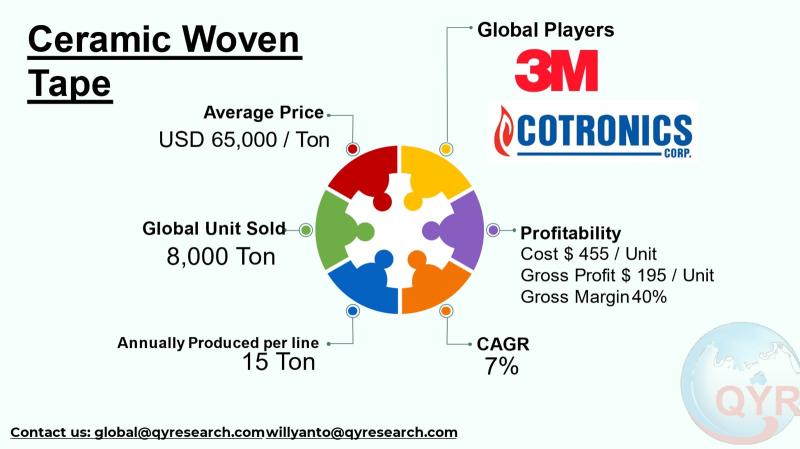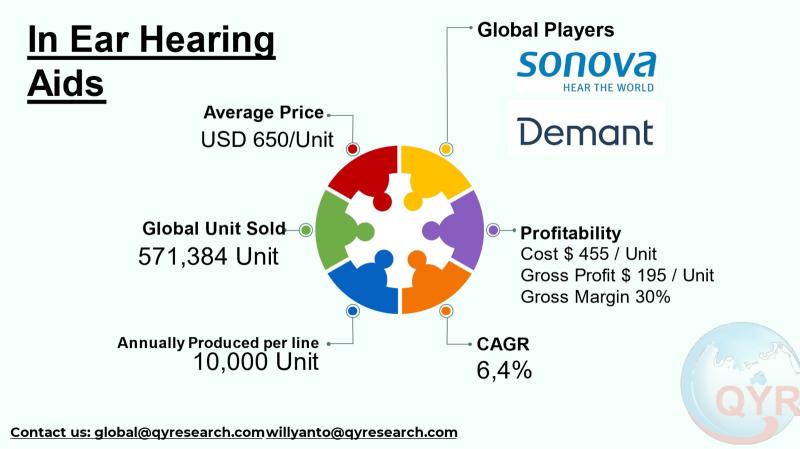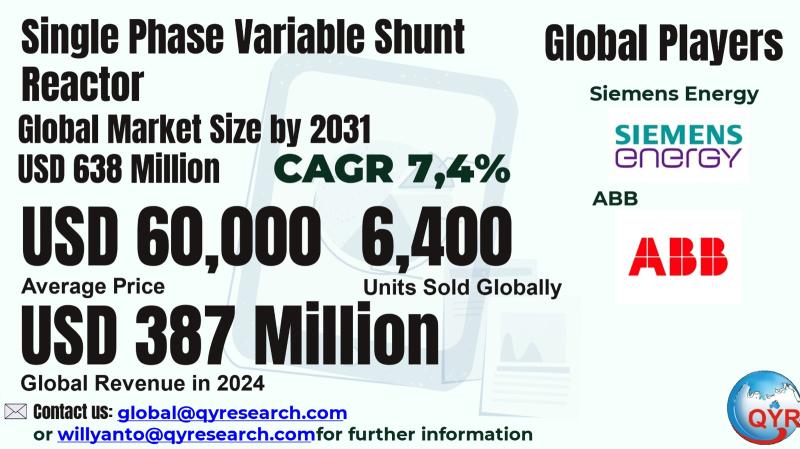Press release
Single Phase Variable Shunt Reactor Market to Reach CAGR 7,4% by 2031 Top 20 Company Globally
Single phase variable shunt reactors (VSRs) are grid-level inductive devices that provide continuously adjustable reactive-power absorption in high-voltage alternating-current systems; by varying their effective reactance (commonly via on-load tap changers or multi-winding arrangements) they reduce light-load overvoltages on long transmission lines and stabilise voltage in corridors with high transmission capacitance (cables, long AC links, or large offshore wind hubs). VSRs are a subset of the broader shunt-reactor family but are specified where smooth, continuous control of inductance is needed rather than stepped switching of fixed reactors; they are routinely supplied as oil-immersed or air-core constructions and sized from a few MVAr for distribution hubs to several hundred MVAr for extra-high-voltage transmission applications. Their value to system operators has risen with the expansion of variable renewable generation because VSRs help contain voltage swings, reduce losses related to reactive power, and defer more expensive reinforcement options such as new lines or synchronous condensers.The single-phase variable shunt reactor market valued in the USD 387 million in 2024; and model a median CAGR of 7,4% to 2031. Implying growth driven by renewable-integration projects, long-distance HVAC corridors and grid modernisation programs across Asia, Europe and North America. This making the market value reaching USD 638 million in 2031.
Unit economics for VSRs vary strongly by voltage class, MVAr rating, cooling medium and optional controls (OLTC, monitoring, oil-filled vs. air core, scope of balance-of-plant). Globally benchmarks in the USD 60,000 per unit, implies to around 6,400 units sold in 2024. The true count depends on project mix, large offshore/hub orders, and whether three-phase banked solutions are procured as single-phase units or delivered as packaged three-phase systems.
Latest Trends and Technological Developments
The technology and project flow for VSRs in 2023 to 2025 shows three converging trends: scaled EHV VSRs for renewable corridors, localisation of manufacturing for very-high-voltage units, and incremental sustainability/efficiency improvements in materials and testing. A representative project signal is Siemens Energys long-standing record for large VSRs (a noted milestone article documenting the worlds most powerful VSR test was published December 2018), which established technical feasibility for 100+ MVAr coastal/offshore applications and remains a reference design for large offshore wind links. More recently, CHINT reported delivery of a 400 kV / 200 MVAr VSR in 2024 for a Central European project, illustrating that non-traditional large OEMs are now winning major transmission tenders. On May 2025, GE Vernova announced an order to supply more than 70 extra-high-voltage transformers and shunt reactors to Indias POWERGRID for renewable power corridors, a bulk procurement that signals substantial near-term demand for reactors and VSR-class devices as India expands renewables integration and long-distance evacuation links. The project cadence and vendor wins in 2024 to 2025 show that VSRs have migrated from niche, bespoke units to a more mainstream transmission-asset category where vendors offer scalable, tested platforms and local manufacturing footprints for major regional programs.
Asia Pacific is the largest regional market for shunt reactors and VSRs by share and shipments in 2024, reflecting rapid grid expansion, large renewable corridors and multi-hundred-kV projects across China, India, Korea and Southeast Asian countries. Multiple market reports and vendor order announcements identify Asia as the growth engine: regional utilities are procuring EHV reactors to stabilise long AC cable routes, support offshore wind hubs and manage large HVDC/AC interfacing nodes. Indias POWERGRID program (GE Vernova contract) exemplifies how national transmission buildouts and renewable-evacuation projects convert into multi-unit reactor purchases; utilities are prioritizing proven VSR platforms that provide continuous control, low losses and long lifecycle test certificates. In China and other parts of APAC, domestic OEMs (e.g., TBEA, Hyosung affiliates, CG Power) also capture share, compressing lead times and supporting local content rules for large transmission bids. Overall, Asias mix of very large MVAr projects, renewable buildouts and industrial electrification creates a multi-year pipeline for VSR procurement and service contracts.
Get Full PDF Sample Copy of Report: (Including Full TOC, List of Tables & Figures, Chart)
https://www.qyresearch.com/sample/4933625
Single Phase Variable Shunt Reactor by Type:
Oil Immersed Reactor
Air Core Reactor
Single Phase Variable Shunt Reactor by Application:
Electric Utility
Renewable Energy
Others
Global Top 20 Key Companies in the Single Phase Variable Shunt Reactor Market
Siemens energy
GE Vernova
ABB
NR Electric
Fuji Electric Co., Ltd.
Nissin Electric Co., Ltd.
Hyosung Heavy Industries
Hitachi Energy
Toshiba Corporation
CG Power & Industrial Solutions
Trench Group
Schneider Electric
Eaton Corporation
Alstom SA
Hyundai Heavy Industries
GBE SpA
Hilkar
Getra
TBEA Co., Ltd.
Baoding Tianwei Baobian Electric Co., Ltd
Regional Insights
ASEAN demand is currently smaller than East Asia but accelerating as utilities and independent transmission projects mature. Indonesia is notable for archipelagic transmission challenges and rising generation capacity; in 2025 Indonesia announced ambitious generation diversification plans and has active transmission project pipelines where VSRs can be specified to manage long coastal cables and regional grids. The Philippines and Thailand have also trialled and specified large reactor solutions for cable corridors and interconnection projects. While procurement cycles in ASEAN are still conservative and often favor fixed reactors for lower-cost scopes, recent tenders and pilot projects are increasingly specifying variable capability to avoid repeated switching and to support grids with rising inverter-based generation. This shift is being reinforced by donor-funded transmission upgrades and by regional renewable corridors that need continuous reactive management rather than stepped compensation.
The VSR sector faces five structural headwinds. First, procurement cycles are long and risk-averse: utilities require exhaustive type testing, thermal and dielectric performance proofs and often a track record at similar voltage/MVAr ranges before awarding large contracts, which slows adoption of smaller/new vendors. Second, unit cost variance driven by MVAr rating and voltage class creates buyer uncertainty and complicates standardisation for tendering; big projects can radically shift average selling prices and distort short-term market value. Third, manufacturing and test capacity is concentrated: only a handful of heavy-manufacturing sites globally can build and test very-large VSRs (hundreds of MVAr at 220400 kV), meaning lead times and logistics can be bottlenecks. Fourth, the continuing competition from power-electronic solutions (STATCOMs, SVCs) for fast reactive control in some applications places technical and economic pressure on VSRs in markets that prioritize sub-second dynamic response over energy-efficient steady reactive absorption. Fifth, environmental and lifecycle questions around transformer-type oil systems (for oil-immersed VSRs) push customers toward low-loss, recyclable materials and alternative cooling that can add up-front cost and qualification friction.
For vendors and investors the high-probability plays are clear: secure platform scalability for the 200400 kV range (where single-unit MVAr is highest), localise manufacturing in major growth markets (India, China, selective ASEAN hubs) to meet procurement and content rules, and pair VSR deliveries with long-tail services (on-site testing, condition monitoring, spare-parts packages) to improve lifetime economics. Utilities benefit from tender structures that prioritize lifecycle cost (losses and O&M) and rapid delivery for renewable corridors; hybrid solutions that combine a VSR with fast STATCOM modules can, in many net-benefit cases, optimise both steady absorption and dynamic stability. Investors should look for suppliers with strong factory test capacity, strategic OEM partnerships for turnkey HV substation works, and recurring service revenues from long vendor warranties and condition-monitoring contracts.
Product Models
Single-phase variable shunt reactors are key devices in modern power systems, designed to control reactive power and stabilize voltage in transmission networks. By adjusting their inductive reactance, they help improve grid efficiency and reliability.
Oil-immersed reactors, which use oil as insulation and cooling medium for high-capacity applications. Notable products include:
Siemens Oil-Immersed Shunt Reactor Siemens Energy: Designed for transmission grids up to 765 kV, providing reliable reactive power compensation.
GE Grid Solutions Oil-Immersed Shunt Reactor GE Vernova: Known for high efficiency and robust insulation, widely applied in extra-high voltage networks.
ABB Oil-Immersed Shunt Reactor Hitachi Energy: Custom-built designs with advanced cooling systems for voltage stabilization.
TBEA Oil-Immersed Variable Shunt Reactor TBEA Co.: Widely used in Chinas ultra-high voltage projects, offering adjustable reactive power.
Hyosung Oil-Immersed Shunt Reactor Hyosung Heavy Industries: Compact and efficient design, supporting both urban and industrial power grids.
Air-core reactors which rely on air insulation and are valued for their simple structure, safety, and reduced fire risk. Examples include:
Siemens Air-Core Reactor Siemens Energy: Dry-type, fire-safe design for both indoor and outdoor installations.
GE Air-Core Dry Shunt Reactor GE Vernova: Offers reduced maintenance with compact and environmentally safe construction.
ABB (Hitachi Energy) Air-Core Reactor: Known for high reliability in reactive power compensation applications.
TRENCH Air-Core Shunt Reactor Trench Group: Global leader in dry-type reactors for transmission and distribution systems.
ZTR Air-Core Shunt Reactor Zaporozh transformator: Cost-effective solution for large substations across Eastern Europe.
Single-phase variable shunt reactors are transitioning from specialised, bespoke devices to mainstream transmission-asset classes in grids that host large, geographically dispersed renewable generation and long cable links. Using a reconciled 2024 baseline of USD 387 million and a median CAGR near 7.4% to 2031, the market offers multi-year visibility as national transmission programs, renewable corridors, and large industrial customers specify VSRs for smoother voltage control and lower steady-state losses. Asia Pacific leads demand and will remain a structural growth engine, with ASEAN and Indonesia becoming incrementally important as local grid projects and policy incentives mature.
Investor Analysis
For investors the what is exposure to a capital-goods niche where unit economics, testing capability and local delivery capacity create durable barriers to entry and where large tenders produce lumpy but high-visibility revenue events. The how is via equity stakes in tier-one VSR manufacturers or transformer/OEMs with tested EHV platforms, joint ventures that localise heavy assembly in India/China, or service and spare-parts plays that monetise installed bases. The why is a confluence of policy and technical drivers: national transmission modernization (India POWERGRID deals), offshore and onshore renewable evacuation needs, and utility preference for equipment that reduces line losses and defers costly reinforcements; together these create a multi-year procurement pipeline that supports both new-unit volumes and attractive aftermarket annuities. Risk management should focus on vendor concentration, lead-time inflation for heavy components, and competition from power-electronics solutions for dynamic needs.
Request for Pre-Order Enquiry On This Report
https://www.qyresearch.com/customize/4933625
5 Reasons to Buy This Report
It reconciles disparate published estimates into a defensible 2024 baseline (single-phase VSR ≈ USD 880M) and provides a transparent CAGR range to 2031 with source alignment.
It translates market dollars into unit economics (price per MVAr, average unit price and implied units sold in 2024) with sensitivity brackets that investors and procurement teams can plug into valuation and capex models.
It maps concrete dated developments and project wins (e.g., CHINTs 400 kV/200 MVAr delivery in 2024 and GE Vernovas POWERGRID order on May 2025) that materially move procurement timing and regional demand.
It breaks down Asia and ASEAN dynamics policy, localisation and project pipelines so go-to-market and manufacturing footprint decisions can be prioritized by investors and vendors.
It profiles the competitive set and technological differentiators (OLTC range, oil-immersed vs air core, EHV test capability), enabling rapid target screening for M&A, JV or supply agreements.
5 Key Questions Answered
What is a defensible market size for single-phase VSRs in 2024 and what CAGR should investors model to 2031?
How do price-per-MVAr and average unit price assumptions change the implied global unit shipments and what sensitivity ranges should financial models use?
Which recent project wins and vendor deliveries indicate where short-term demand will materialize regionally?
How do Asia and ASEAN procurement patterns, localisation rules and renewable corridors influence vendor selection and delivery timelines?
Which five suppliers have the proven EHV platforms, factory test capacity and after-sales capability that make them the best candidates for partner-level diligence or acquisition?
Chapter Outline
Chapter 1: Introduces the report scope of the report, executive summary of different market segments (by region, product type, application, etc), including the market size of each market segment, future development potential, and so on. It offers a high-level view of the current state of the market and its likely evolution in the short to mid-term, and long term.
Chapter 2: key insights, key emerging trends, etc.
Chapter 3: Manufacturers competitive analysis, detailed analysis of the product manufacturers competitive landscape, price, sales and revenue market share, latest development plan, merger, and acquisition information, etc.
Chapter 4: Provides profiles of key players, introducing the basic situation of the main companies in the market in detail, including product sales, revenue, price, gross margin, product introduction, recent development, etc.
Chapter 5 & 6: Sales, revenue of the product in regional level and country level. It provides a quantitative analysis of the market size and development potential of each region and its main countries and introduces the market development, future development prospects, market space, and market size of each country in the world.
Chapter 7: Provides the analysis of various market segments by Type, covering the market size and development potential of each market segment, to help readers find the blue ocean market in different market segments.
Chapter 8: Provides the analysis of various market segments by Application, covering the market size and development potential of each market segment, to help readers find the blue ocean market in different downstream markets.
Chapter 9: Analysis of industrial chain, including the upstream and downstream of the industry.
Chapter 10: The main points and conclusions of the report.
Contact Information:
Tel: +1 626 2952 442 (US) ; +86-1082945717 (China)
+62 896 3769 3166 (Whatsapp)
Email: willyanto@qyresearch.com; global@qyresearch.com
Website: www.qyresearch.com
About QY Research
QY Research has established close partnerships with over 71,000 global leading players. With more than 20,000 industry experts worldwide, we maintain a strong global network to efficiently gather insights and raw data.
Our 36-step verification system ensures the reliability and quality of our data. With over 2 million reports, we have become the world's largest market report vendor. Our global database spans more than 2,000 sources and covers data from most countries, including import and export details.
We have partners in over 160 countries, providing comprehensive coverage of both sales and research networks. A 90% client return rate and long-term cooperation with key partners demonstrate the high level of service and quality QY Research delivers.
More than 30 IPOs and over 5,000 global media outlets and major corporations have used our data, solidifying QY Research as a global leader in data supply. We are committed to delivering services that exceed both client and societal expectations.
This release was published on openPR.
Permanent link to this press release:
Copy
Please set a link in the press area of your homepage to this press release on openPR. openPR disclaims liability for any content contained in this release.
You can edit or delete your press release Single Phase Variable Shunt Reactor Market to Reach CAGR 7,4% by 2031 Top 20 Company Globally here
News-ID: 4158999 • Views: …
More Releases from QY Research
Top 30 Indonesian Infrastructure Public Companies Q3 2025 Revenue & Performance
Snapshot of the sector in Q3 2025: the infrastructure sector showed a mixed Q3 a handful of larger toll / asset owners (e.g., Jasa Marga) continued to post positive operating income, while many construction heavyweights (Waskita, Wijaya Karya, Adhi, PTPP) reported sharply compressed profits or losses YTD as project slowdowns, working-capital pressures and financing costs weighed on margins and triggered higher provisions in some balance sheets.
Section 2 - Earnings…

The Rise of Tuned Noise Panels: How Asia and ASEAN Are Powering the Next Wave of …
The tuned noise panel industry sits at the intersection of architectural acoustics, industrial noise control, and materials engineering, delivering products that selectively target and reduce problematic frequency bands in buildings, transport corridors and industrial plants. Tuned panels from micro-perforated wooden laminates to cavity-backed membrane absorbers and hybrid tuned/diffuser systems are increasingly specified where speech intelligibility, low-frequency control, or aesthetic integration are required. Demand is driven by urbanization, stricter acoustic regulations,…

Global Ceramic Woven Tape Market 2024-2031: Inside the High-Temperature Material …
Ceramic woven tape a family of high-temperature, flexible ceramic textiles used for insulation, sealing, wrapping and specialty composite reinforcement occupies a niche but strategically important position in high-temperature manufacturing, energy systems and advanced materials supply chains. Its combination of thermal resistance, flexibility and ease of installation makes it attractive where conventional insulations fail or add excessive weight, and the industry sits at the intersection of traditional refractory manufacturing and advanced…

2024 - 2031 In-Ear Hearing Aids Outlook: The Technologies, Regions, and Companie …
The global in-ear hearing aids market a subset of the broader hearing aids industry plays an increasingly important role in improving quality of life for people with hearing impairments. As global populations age and awareness of hearing loss grows, demand for discreet, effective hearing solutions rises. This report aims to provide a comprehensive overview of the in-ear hearing aids market, with special emphasis on Asia and Southeast Asia, assessing current…
More Releases for VSR
Air Electron Gun Market Size, Share and Forecast By Key Players-VSR INDUSTRIETEC …
𝐔𝐒𝐀, 𝐍𝐞𝐰 𝐉𝐞𝐫𝐬𝐞𝐲- According to the MRI Team's Market Research Intellect, the global Air Electron Gun market is anticipated to grow at a compound annual growth rate (CAGR) of 7.84% between 2024 and 2031. The market is expected to grow to USD 17.83 Billion by 2024. The valuation is expected to reach USD 30.24 Billion by 2031.
Due to advances in semiconductor technology and the growing need for high-resolution imaging in…
Shunt Reactor Market 2021 Industry Status and Global Outlook till 2025
The Global Shunt Reactor Market Report Forecast 2021 - 2025 is a valuable source of insightful data for business strategists. It provides the industry overview with growth analysis and historical & futuristic cost, revenue, demand, and supply data (as applicable). The research analysts provide an elaborate description of the value chain and its distributor analysis. This Market study provides comprehensive data that enhances the understanding, scope, and application of this…
Ready to Eat Rice Market Growing Popularity and Emerging Trends | VSR Rice, Sene …
The Latest research study released by HTF MI “Global Ready to Eat Rice Market” with 100+ pages of analysis on business Strategy taken up by key and emerging industry players and delivers know how of the current market development, landscape, technologies, drivers, opportunities, market viewpoint and status. Understanding the segments helps in identifying the importance of different factors that aid the market growth. Some of the Major Companies covered in…
Network security management Market 2020: Analysis By Regional Outlook, Competiti …
Complete study of the global Network security management market is carried out by the analysts in this report, taking into consideration key factors like drivers, challenges, recent trends, opportunities, advancements, and competitive landscape. This report offers a clear understanding of the present as well as future scenario of the global Network security management industry. Research techniques like PESTLE and Porter's Five Forces analysis have been deployed by the researchers. They…
Network security Management Market 2020 Will Fastest Grow in Future by Key Compa …
Network security Management Market 2020 Industry Research Report gives vital information then analytical data of Network security Management Market Size, Share, Growth, Key Players then forecast. Furthermore it provides development trends and marketing channels analysis. Finally the feasibility of new investment projects are assessed and overall research conclusions offered. This report also presents product specification, manufacturing process, and product cost structure.
Get Sample Copy of this Report- https://www.orianresearch.com/request-sample/1488892
Synopsis of the…
Europe Basmati Rice Market Expected to Reach $615 Million by 2023 | Leading Comp …
According to a new report published by Allied Market Research, titled, Europe Basmati Rice Market by Type and Application: Opportunity Analysis and Industry Forecast, 2017-2023, the Europe basmati rice market was valued at $491 million in 2016, and is expected to reach $615 million by 2023, registering a CAGR of 3.2% from 2017 to 2023. In 2016, the Indian variety type segment accounted for more than half share of the…
